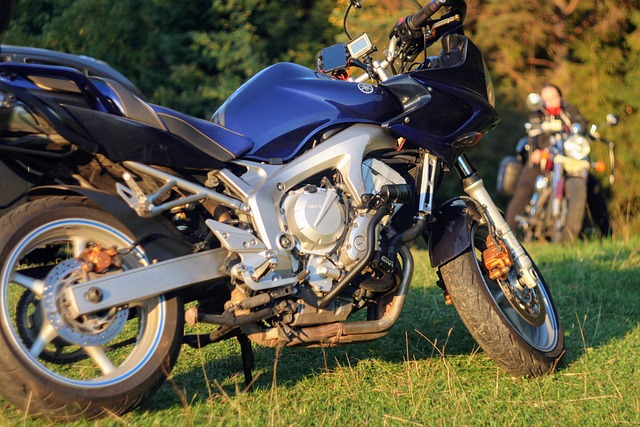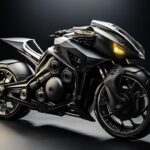Motorcycling is a thrilling experience, but it also comes with unique risks. A robust motorcycle insurance policy can safeguard you against the financial consequences of accidents, theft, and other unforeseen events. Understanding the key coverages in a motorcycle insurance policy is essential for ensuring you’re adequately protected. Let’s explore the fundamental components of motorcycle insurance and how they work together to provide comprehensive coverage.
1. Liability Coverage
Liability coverage is the backbone of any motorcycle insurance policy and is legally required in most states. It consists of two main components:
- Bodily Injury Liability (BIL):
Covers medical expenses, lost wages, and legal fees for injuries you cause to others in an accident. - Property Damage Liability (PDL):
Covers the cost of repairing or replacing someone else’s property damaged in an accident, such as their vehicle or a fence. - Example:
If you accidentally rear-end a car, liability coverage will pay for the damage to the other vehicle and any injuries sustained by its occupants.
To understand the importance of liability coverage, read more here.
2. Collision Coverage
Collision coverage protects your motorcycle in the event of an accident, regardless of who is at fault. It pays for repairs or replacement costs up to the market value of your bike.
- Key Features:
- Covers accidents involving other vehicles or stationary objects.
- Requires you to pay a deductible, after which the insurer covers the remaining costs.
- Example:
If you hit a guardrail and damage your motorcycle, collision coverage will help pay for the repairs.
3. Comprehensive Coverage
Comprehensive coverage extends protection beyond accidents, covering a range of non-collision events such as:
- Theft
- Vandalism
- Fire
- Natural disasters
- Example:
If your motorcycle is stolen from your driveway, comprehensive coverage will compensate you for its value. - Additional Note:
This coverage is particularly important for motorcyclists who live in areas prone to extreme weather or high theft rates. Learn more about how comprehensive coverage works here.
4. Uninsured/Underinsured Motorist Coverage
This coverage protects you if you’re involved in an accident with a driver who doesn’t have sufficient insurance or any insurance at all. It can cover:
- Medical expenses
- Lost wages
- Repair costs for your motorcycle
- Example:
If an uninsured driver runs a red light and collides with your bike, this coverage ensures you’re not left to shoulder the costs alone.
5. Medical Payments Coverage (MedPay)
Medical payments coverage pays for medical expenses resulting from an accident, regardless of who is at fault. This can include:
- Hospital bills
- Emergency services
- Rehabilitation costs
- Example:
If you sustain injuries in an accident, MedPay will help cover your out-of-pocket medical expenses.
6. Custom Parts and Equipment Coverage
For motorcyclists who have invested in customizing their bikes, this coverage protects aftermarket parts and upgrades, such as:
- Custom paint jobs
- Enhanced exhaust systems
- Upgraded wheels
- Example:
If your bike is damaged in an accident, this coverage ensures your custom parts are included in the repair or replacement costs.
7. Roadside Assistance
Roadside assistance provides peace of mind by covering unexpected breakdowns while on the road. Services typically include:
- Towing
- Flat tire repair
- Battery jump-starts
- Fuel delivery
- Example:
If your motorcycle breaks down during a road trip, roadside assistance ensures you’re not stranded.
8. Total Loss Replacement
This coverage replaces your motorcycle with a new one of the same make and model if it’s totaled in an accident.
- Example:
If your bike is declared a total loss after a collision, this coverage ensures you’re compensated with a brand-new replacement.
9. Personal Injury Protection (PIP)
PIP coverage goes beyond medical payments by also covering:
- Lost wages
- Childcare expenses
- Funeral costs (in extreme cases)
- Example:
If an accident leaves you unable to work, PIP provides financial support to cover your daily expenses.
Real-Life Scenario: How Key Coverages Work Together
Imagine you’re riding on a scenic highway when a deer suddenly crosses your path. You swerve to avoid the animal but lose control and crash:
- Collision Coverage: Pays for repairs to your motorcycle.
- Comprehensive Coverage: Covers damage caused by hitting the deer, if applicable.
- Medical Payments Coverage: Covers your hospital bills.
- Custom Parts Coverage: Repairs the aftermarket seat and exhaust system you installed.
Having these coverages ensures you’re financially protected from multiple angles.
How to Choose the Right Coverages
Selecting the right coverages depends on factors like:
- Your Riding Habits: Frequent riders may need comprehensive and collision coverage, while occasional riders might opt for basic liability.
- Your Bike’s Value: High-value bikes or custom motorcycles benefit from enhanced coverage.
- Your Location: Areas with high theft rates or extreme weather may necessitate comprehensive coverage.
Balancing Cost and Protection
While comprehensive policies offer extensive protection, they can also be costly. To keep premiums affordable:
- Bundle Policies: Combine motorcycle and auto insurance for discounts.
- Take a Safety Course: Many insurers offer discounts for completing approved rider safety programs.
- Shop Around: Compare quotes to find the best value for your coverage needs.
Understanding the key coverages in a motorcycle insurance policy is essential for protecting yourself, your bike, and your finances. From liability to collision and beyond, each component plays a critical role in safeguarding you against the unexpected. By tailoring your policy to your needs, you can hit the road with confidence, knowing you’re fully protected.



